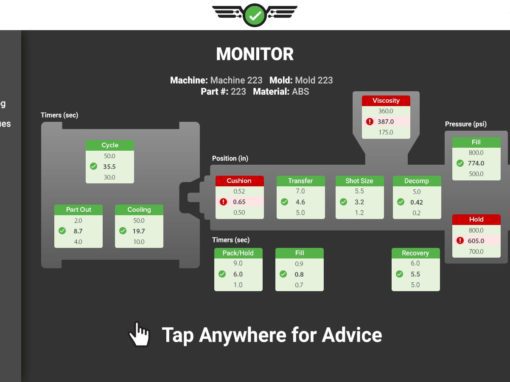Tip of the Day 17: Use the Average, Luke
Most of you have heard of “multi-process disease” – the random, snot to shot variation in cavity pressure in multi cavity hot-runner molds. The question is: In a Decoupled 3 process, which sensor should I use to transfer the machine?
Traditionally we have encouraged the concept of finding which cavity most follows the average. This requires a good eye or some off line analysis.
Another method that has been demonstrated to work is to do control on the “ #Avg” sensor (Post Gate or End of Cavity or whatever). If your mold has eight cavities with an End of Cavity sensor in each, chose “End of Cavity #Avg” in the V to P Transfer tool set the level for the best set of parts using your normal techniques. The “ #Avg” is the running average of all sensors named “End of Cavity” in the tool.
But what happens if one or more cavities block force the others to flash? Won’t the average stay about the same? I hear you cry.
In eDART software release 7.12 and later you will see a “More” button on the V to P Transfer tool. Click that button and you will get a dialog to which you can add other control sensors. Whichever sensor reaches its setpoint first will transfer the machine (including the one on the main page). But rather than add eight different sensors you can just add “End of Cavity #High”. This is the instantaneous highest value of all of the sensors named “End of Cavity”. You should set this at a level below flashing the mold but high enough to be above the normal controlling “End of Cavity #Avg” above.
This is the safety valve or backup to the average. Any sensor that reaches that high setpoint will transfer the machine, even if the average lags behind.
By the way, you can put the “ #Avg”, “ #High”, “#Low” and “ #Rng” (“Range”) sensors on the cycle graph, set alarms on them, look at summary data etc. They act just like “real” sensors. Stay tuned for more on this subject.

